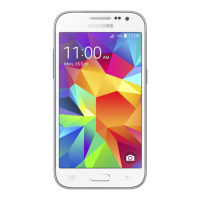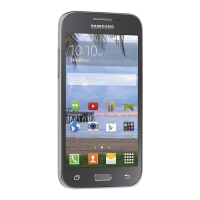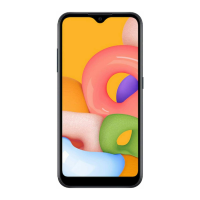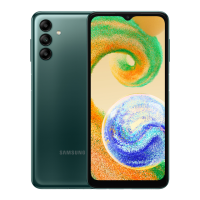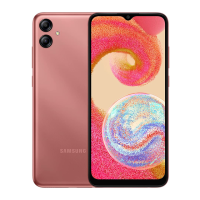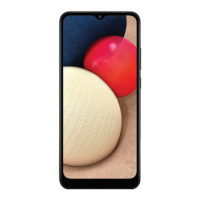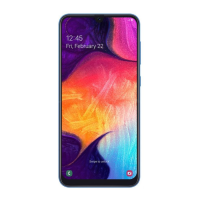Do you have a question about the Samsung Galaxy A03 Core and is the answer not in the manual?
Important information before using the device.
Explains causes and remedies for device overheating.
Identifies physical components and their purposes.
Instructions and precautions for charging the device battery.
Guide for installing and managing SIM/USIM cards.
Details on touchscreen operations and gestures.
Explains keyboard layout, input language, and text entry methods.
How to download, install, and remove applications.
Making and receiving voice and video calls.
Managing contact information, creating, importing, and sharing.
Sending, viewing, and managing text messages.
Browsing the web and bookmarking pages.
Taking pictures and recording videos with various modes.
Configuring Wi-Fi, Bluetooth, and mobile networks.
Customizing screen brightness, wallpaper, and font size.
Setting up screen locks and security features.
Optimizing device performance, battery, storage, and memory.
Managing device languages, date/time, and software updates.
Solutions for common device problems and errors.
| Processor cores | 8 |
|---|---|
| Processor model | - |
| Processor frequency | 1.6 GHz |
| Panel type | TFT |
| Screen shape | Flat |
| Display diagonal | 6.5 \ |
| Display resolution | 720 x 1600 pixels |
| Display number of colors | 16 million colors |
| USB port | Yes |
| USB version | 2.0 |
| USB connector type | Micro-USB |
| Headphone connectivity | 3.5 mm |
| 4G standard | LTE-FDD |
| 3G standards | WCDMA |
| SIM card type | NanoSIM |
| Wi-Fi standards | 802.11b, 802.11g, Wi-Fi 4 (802.11n) |
| Bluetooth version | 4.2 |
| 3G bands supported | 850, 900, 2100 MHz |
| 4G bands supported | 700, 800, 850, 900, 1800, 2100, 2600 MHz |
| SIM card capability | Dual SIM |
| Mobile network generation | 4G |
| Near Field Communication (NFC) | No |
| RAM capacity | 2 GB |
| Compatible memory cards | MicroSD (TransFlash) |
| Maximum memory card size | 1000 GB |
| Internal storage capacity | 32 GB |
| Multimedia Messaging Service (MMS) | Multimedia Messaging Service (MMS) is a standard way to send messages that include multimedia content to and from a mobile phone over a cellular network |
| Flash type | LED |
| Digital zoom | 4 x |
| Front camera type | Single camera |
| Maximum frame rate | 30 fps |
| Rear camera aperture number | 2 |
| Front camera aperture number | 2.2 |
| Video capture resolution (max) | 1920 x 1080 pixels |
| Rear camera resolution (numeric) | 8 MP |
| Front camera resolution (numeric) | 5 MP |
| Platform | Android |
| Operating system installed | Android 11 |
| Talk time (3G) | - h |
| Battery capacity | 5000 mAh |
| Form factor | Bar |
| Product color | Blue |
| Speakers | Mono |
| Audio formats supported | 3GA, AAC, AMR, AWB, FLAC, IMY, M4A, MID, MIDI, MP3, MXMF, OGA, OGG, OTA, RTTTL, RTX, WAV, XMF |
| Video formats supported | AVI, FLV, MKV, MP4 |
| Depth | 9.1 mm |
|---|---|
| Width | 75.9 mm |
| Height | 164.2 mm |
| Weight | 211 g |
